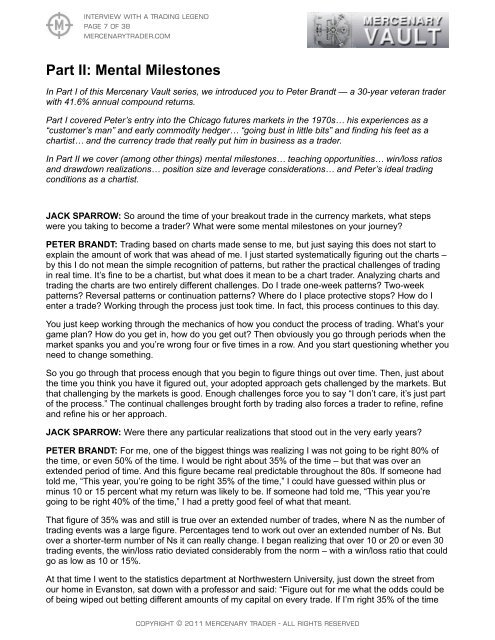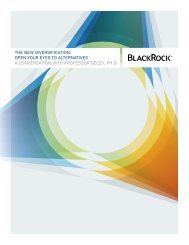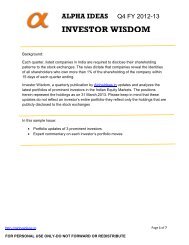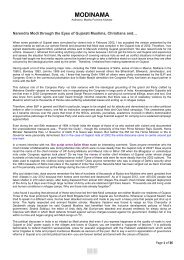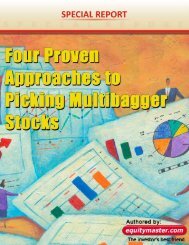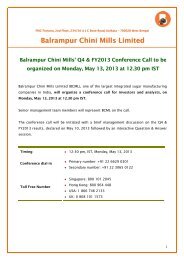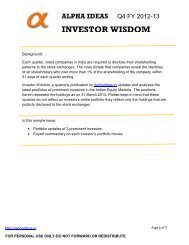Interview With a Trading Legend - Mercenary Trader
Interview With a Trading Legend - Mercenary Trader
Interview With a Trading Legend - Mercenary Trader
Create successful ePaper yourself
Turn your PDF publications into a flip-book with our unique Google optimized e-Paper software.
<strong>Interview</strong> <strong>With</strong> a <strong>Trading</strong> <strong>Legend</strong><br />
Page 7 of 38<br />
mercenarytrader.com<br />
Part II: Mental Milestones<br />
In Part I of this <strong>Mercenary</strong> Vault series, we introduced you to Peter Brandt — a 30-year veteran trader<br />
with 41.6% annual compound returns.<br />
Part I covered Peter’s entry into the Chicago futures markets in the 1970s… his experiences as a<br />
“customer’s man” and early commodity hedger… “going bust in little bits” and finding his feet as a<br />
chartist… and the currency trade that really put him in business as a trader.<br />
In Part II we cover (among other things) mental milestones… teaching opportunities… win/loss ratios<br />
and drawdown realizations… position size and leverage considerations… and Peter’s ideal trading<br />
conditions as a chartist.<br />
JACK SPARROW: So around the time of your breakout trade in the currency markets, what steps<br />
were you taking to become a trader? What were some mental milestones on your journey?<br />
PETER BRANDT: <strong>Trading</strong> based on charts made sense to me, but just saying this does not start to<br />
explain the amount of work that was ahead of me. I just started systematically figuring out the charts –<br />
by this I do not mean the simple recognition of patterns, but rather the practical challenges of trading<br />
in real time. It’s fine to be a chartist, but what does it mean to be a chart trader. Analyzing charts and<br />
trading the charts are two entirely different challenges. Do I trade one-week patterns? Two-week<br />
patterns? Reversal patterns or continuation patterns? Where do I place protective stops? How do I<br />
enter a trade? Working through the process just took time. In fact, this process continues to this day.<br />
You just keep working through the mechanics of how you conduct the process of trading. What’s your<br />
game plan? How do you get in, how do you get out? Then obviously you go through periods when the<br />
market spanks you and you’re wrong four or five times in a row. And you start questioning whether you<br />
need to change something.<br />
So you go through that process enough that you begin to figure things out over time. Then, just about<br />
the time you think you have it figured out, your adopted approach gets challenged by the markets. But<br />
that challenging by the markets is good. Enough challenges force you to say “I don’t care, it’s just part<br />
of the process.” The continual challenges brought forth by trading also forces a trader to refine, refine<br />
and refine his or her approach.<br />
JACK SPARROW: Were there any particular realizations that stood out in the very early years?<br />
PETER BRANDT: For me, one of the biggest things was realizing I was not going to be right 80% of<br />
the time, or even 50% of the time. I would be right about 35% of the time – but that was over an<br />
extended period of time. And this figure became real predictable throughout the 80s. If someone had<br />
told me, “This year, you’re going to be right 35% of the time,” I could have guessed within plus or<br />
minus 10 or 15 percent what my return was likely to be. If someone had told me, “This year you’re<br />
going to be right 40% of the time,” I had a pretty good feel of what that meant.<br />
That figure of 35% was and still is true over an extended number of trades, where N as the number of<br />
trading events was a large figure. Percentages tend to work out over an extended number of Ns. But<br />
over a shorter-term number of Ns it can really change. I began realizing that over 10 or 20 or even 30<br />
trading events, the win/loss ratio deviated considerably from the norm – with a win/loss ratio that could<br />
go as low as 10 or 15%.<br />
At that time I went to the statistics department at Northwestern University, just down the street from<br />
our home in Evanston, sat down with a professor and said: “Figure out for me what the odds could be<br />
of being wiped out betting different amounts of my capital on every trade. If I’m right 35% of the time<br />
Copyright © 2011 <strong>Mercenary</strong> <strong>Trader</strong> - All Rights Reserved


